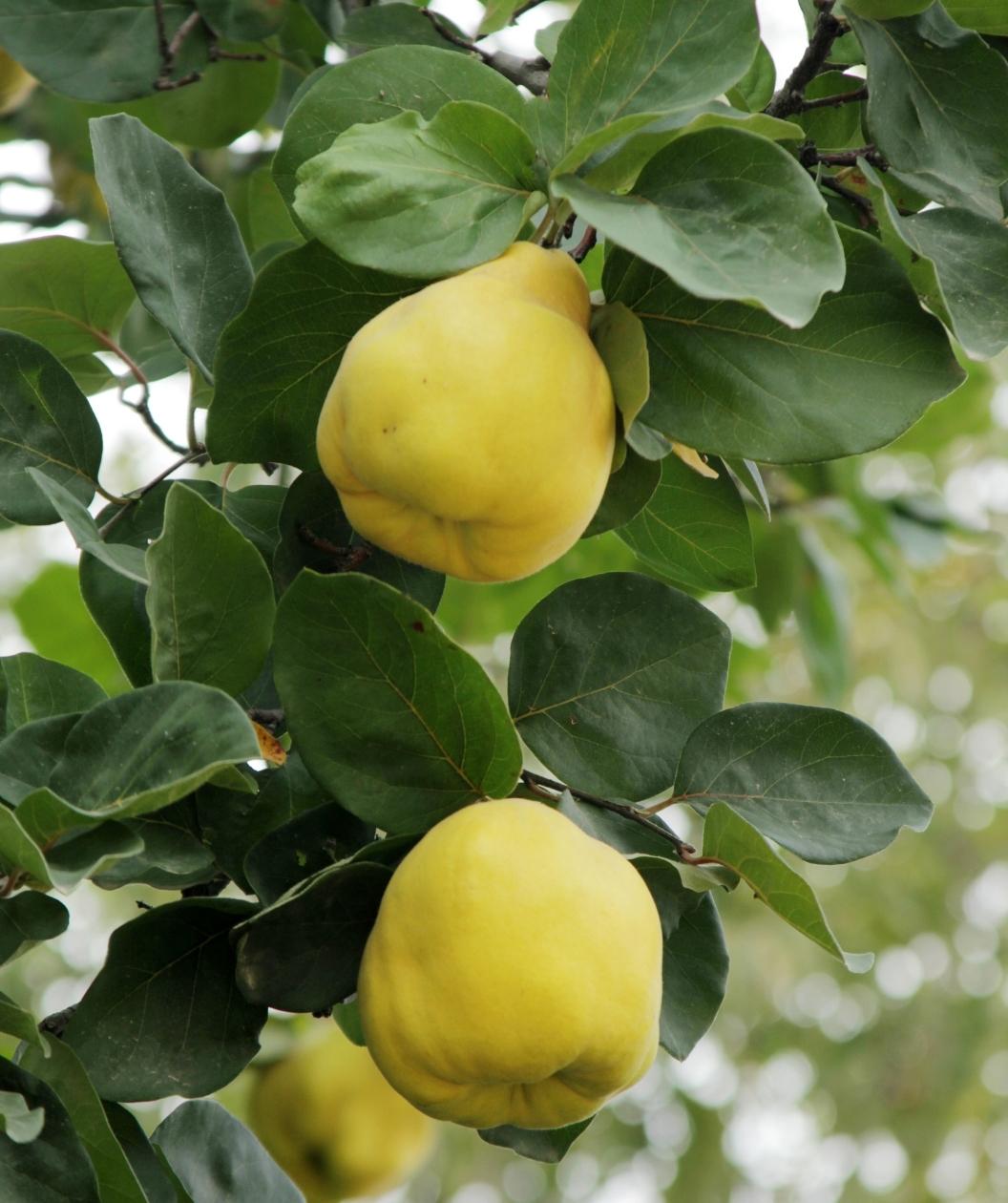






BEAUTIFUL BLOOMING TREE THAT PROVIDES DELICIOUS LARGE FRUITS
FEATURES:
- Blooms appear white to light pink during the spring season
- In spring, dark green foliage appears in broadly ovate shape
- In fall, shades of yellow take hold before dormancy
- This tree produces large, yellow, and pear shaped fruit that are perfect for jellies and jams
- Bees, butterflies and hummingbirds will adorn your property during spring when blooms are abundant
- Possibilities are endless with this amazing tree
- Tree is self fertile while planting two or more will increase your harvest amount
- Hand Selected, Fresh from our Grower
- Ships in a plant-safe designed box
Photo Credit: ©Nova-Photo-Graphik GmbH® Champion Common Quince
Growth Facts
- Hardiness Zone: 5-9
- Mature Height: 6-10' tall
- Mature Width: 4-6' wide
- Exposure: Full Sun
- Spacing: 5-8' apart
BEAUTIFUL BLOOMING TREE THAT PROVIDES DELICIOUS LARGE FRUITS
FEATURES:
- Blooms appear white to light pink during the spring season
- In spring, dark green foliage appears in broadly ovate shape
- In fall, shades of yellow take hold before dormancy
- This tree produces large, yellow, and pear shaped fruit that are perfect for jellies and jams
- Bees, butterflies and hummingbirds will adorn your property during spring when blooms are abundant
- Possibilities are endless with this amazing tree
- Tree is self fertile while planting two or more will increase your harvest amount
- Hand Selected, Fresh from our Grower
- Ships in a plant-safe designed box
Photo Credit: ©Nova-Photo-Graphik GmbH® Champion Common Quince
Growth Facts
- Hardiness Zone: 5-9
- Mature Height: 6-10' tall
- Mature Width: 4-6' wide
- Exposure: Full Sun
- Spacing: 5-8' apart
Why plant Champion Common Quince Bare Root?
Those aren't yellow pears growing on that tree, those are yellow Champion Common Quinces that are ripe for the picking! Never heard of a quince before? No problem, these unusual fruits will introduce you to their kind all on their own. From the pretty pinkish white flowers to the pear-shaped aromatic fruits, Champion has much to offer. Not commonly eaten fresh, take the ripened quince and turn it into jam or jelly and enjoy the natural pink color that pops out once the flesh is cooked. In addition, Champion is a very hardy and has very few pests and diseases that care to bother with this tree. Change up your fruit list this year and be sure to add Champion to your list of fruit trees to plant.
Quinces are native to the Trans-Caucasus region that include countries such as Russia and Iran. These trees can be found growing wild in woodland margins and rocky slopes, but currently are not found very often in US landscapes. Due to the cold winters experienced in the US, many quince trees are not able to ripen the fruits, giving them an astringent flavor that disappears when cooked. If located in an area with warm winters, quince fruits can be properly ripened on the tree and eaten fresh.
How to use Champion Common Quince Bare Root in the landscape?
Champion is just that, a champion to grow. Quince trees can be particular when growing, but Champion is the hardiest of all quince varieties available to date. A self-pollinating tree, Champion will produce large fruits that have a heavenly aroma and flavor, but with another quince nearby the overall yield will be larger. With it's signature crooked branches, Champion can make a lovely flowering and fruiting hedge with the pinkish-white blooms in the spring and fruit in late fall, early winter. Braid the branches of multiple trees together to create a very unique and one-of-a-kind hedge that neighbors will be gawking at for years to come.
Planting Zones
Hardiness Zone: 5-9
How To Plant Champion Common Quince Bare Root
Plant Champion Quince in a location where it can soak up unlimited sun all day with moist soils. As long as the soil is not extremely wet, Champion can thrive in moist to wet soil types with good drainage. There are not many pests or diseases that Champion is prone to, however you will want to keep an eye out for Quince Leaf Blight and treat appropriately. Once picked, fruit should be allowed to mature for up to six weeks.
How To Water
Water well when your plant first arrives! Quince trees need to be watered deeply, and regularly, a few times a week, during its first few years in the ground. Irrigate weekly, and especially during long dry spells or extreme heat after it’s established.
How To Fertilize
Incorporate Elements Starter Plant food granular form into the soil when planting.
How To Prune
Quince trees fruit on new growth, not old, so you should prune yearly in late fall into winter. You should remove any dead, damaged or crossing branches each year. Pruning each year keeps your tree healthy and encourages growth - which encourages fruit production!
Videos
How Does Shipping Work?
Size Small, Medium, and Large plants (our Treelings, Shrubs, Bushes, and Perennials) will be shipped directly to your home by a common carrier. Ships in a plant-safe designed box within 4-7 business days.





